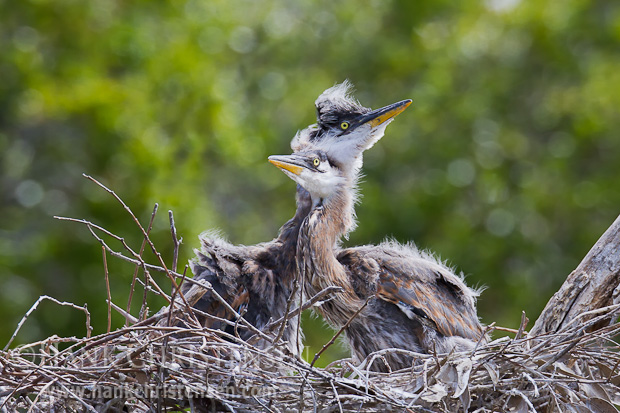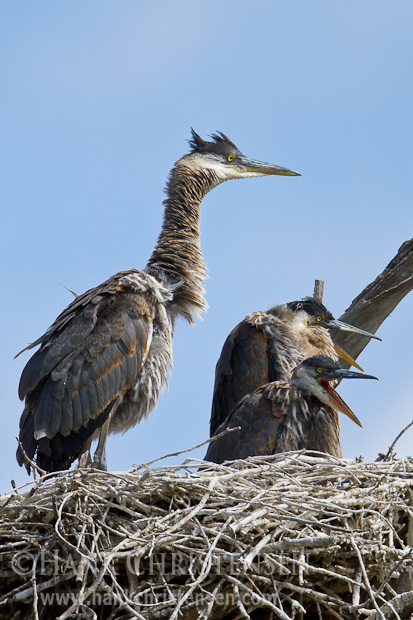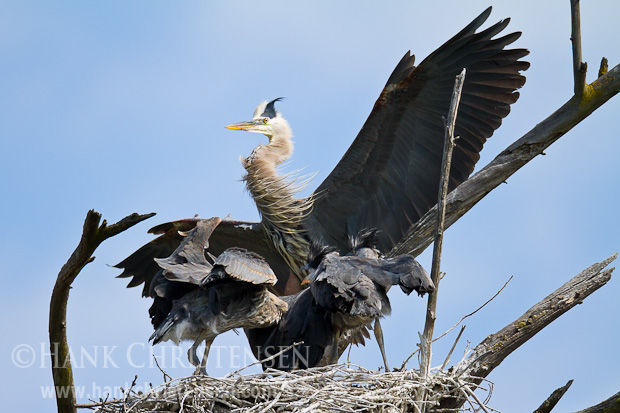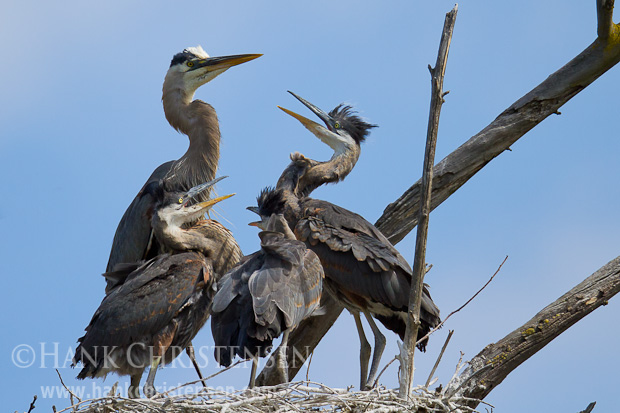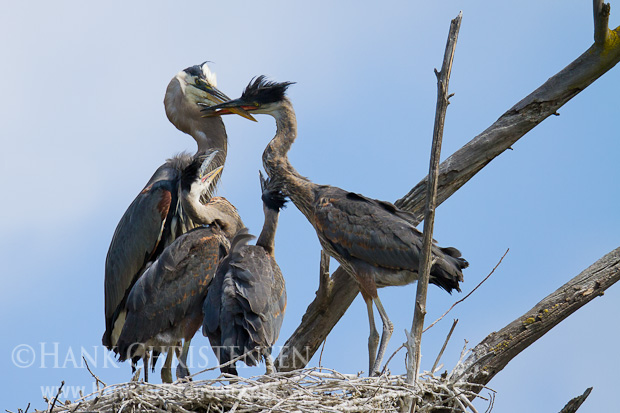In honor of Valentine’s Day, I want to share the more cuddly moments of the mating ritual of the American Avocet, which remains one of the most interesting and unexpected behaviors of birds I have witnessed first hand. I have written about this ritual before, but recently I was able to acquire much better photographs to illustrate this strange little dance.
After the male chases the female around for a while, the female finally signals her acceptance of the male by flattening out her body parallel to the water and jutting out her neck. The male stands next to her and splashes water over her head, signaling his intent.
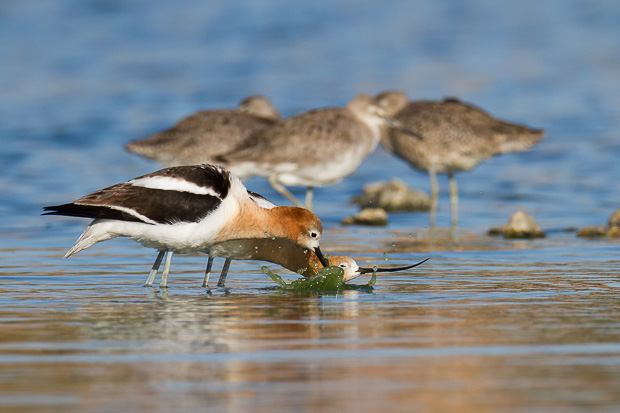
After the couple have their special “moment” together, then begins the truly unusual and surprisingly sweet interplay between the genders. The male keeps one wing wrapped around the female and crosses bills with her.
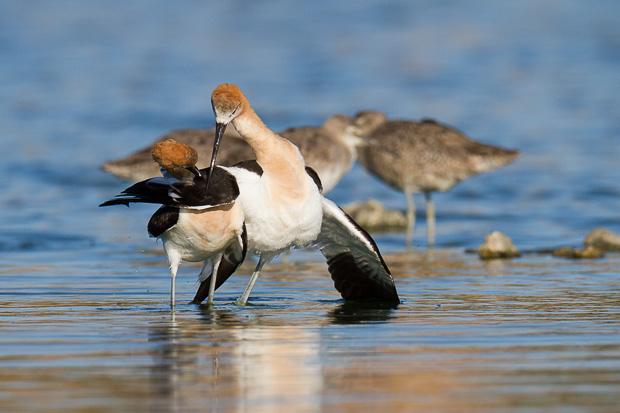
As soon as the male is back in the water, he leads the female in a 360 degree turn, the entire time keeping their bills crossed. Every time I have seen this, this part of the ritual is the same. I’m not sure if this is to somehow solidify the bond between the two birds, but it seems to be a necessity.
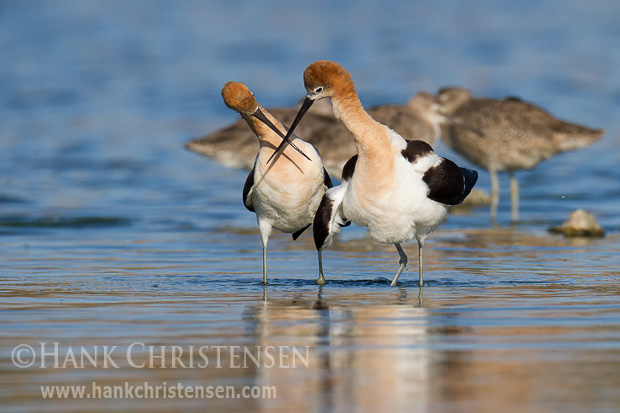
Once the requisite turn is made, the two march off in a straight line together, side by side.
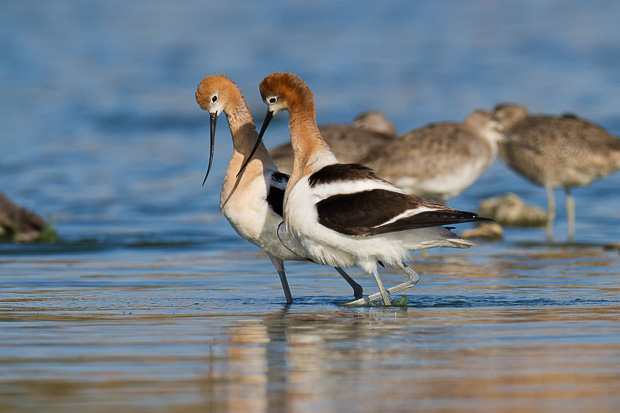
Soon after, each bird goes back to whatever they were doing before expressing their partnership. The couple remains together throughout the nesting season.
May you have a wonderful Valentine’s Day – hopefully you get to spend it with your sweetheart!

